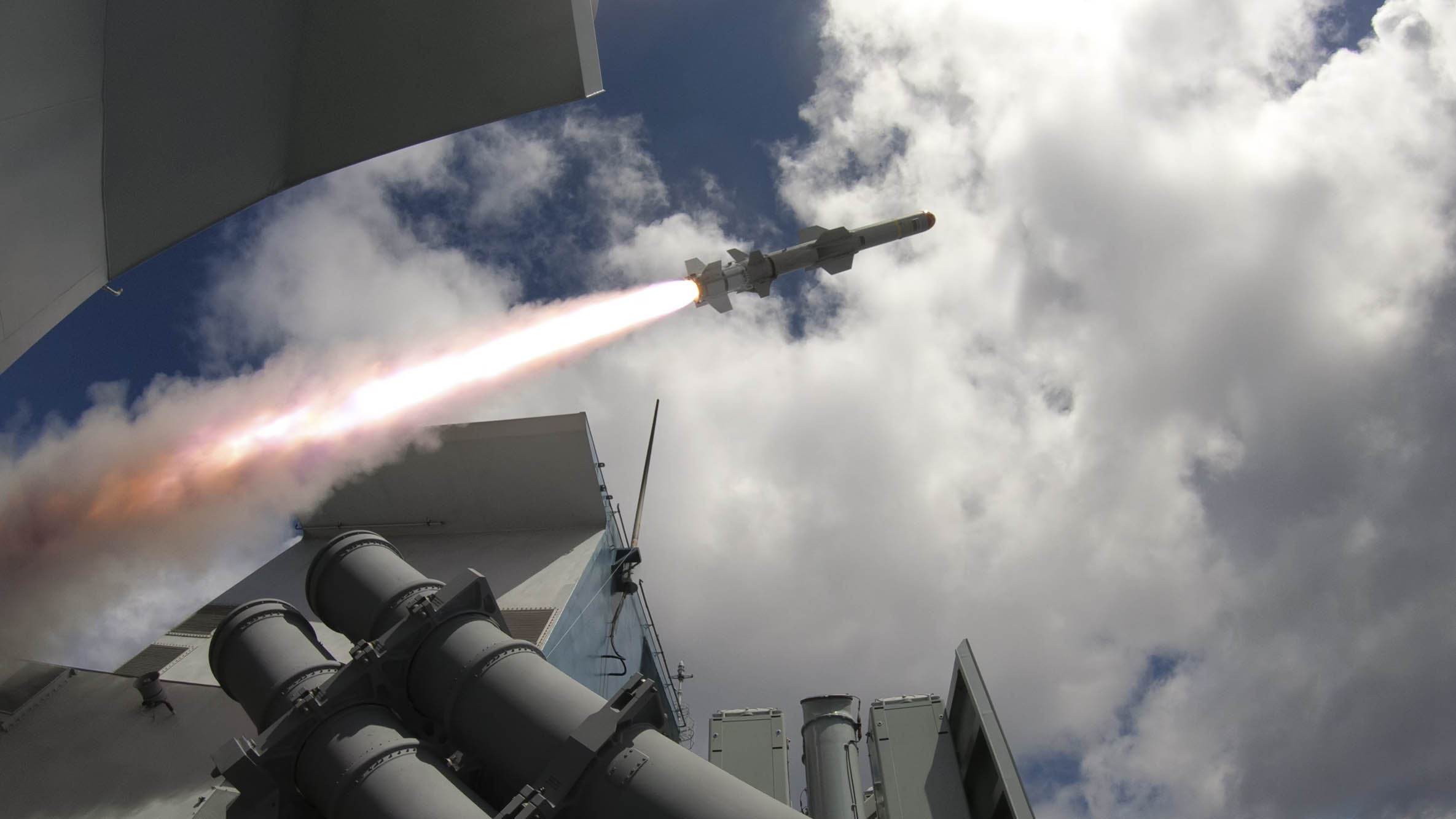Taiwan Receives First Shipment of Harpoon Anti-Ship Missile Systems That Can Complicate Chinese Attack

The first shipment of 100 land-based Harpoon anti-ship missile systems ordered from the United States has reportedly arrived in Kaohsiung, Taiwan, marking a significant milestone in the island’s defense capabilities.
According to the Taiwan-based Liberty Times, the equipment was unloaded at Kaohsiung Port on September 27. However, details regarding the components of the missile systems included in this initial delivery remain unclear.
This acquisition is part of a larger deal approved by the U.S. in 2020. It includes 400 RTM-84L-4 Harpoon Block II missiles, four maneuverable versions of the missile, 100 launcher transporter units, and 25 radar trucks.
The first phase of deliveries, set to conclude by 2026, is expected to deliver 128 missiles, while the second and final phase is anticipated by the end of 2028.
The Ministry of National Defense of Taiwan has allocated NT$71.02 billion (approximately US$2.24 billion) for the complete package, with an additional NT$15 billion earmarked for constructing missile bases.
The news is a crucial development for Taiwan, which has experienced delays in receiving arms from the US. Taiwan has been negotiating with the US to speed up the delivery timeline.

In 2023, it was reported that Taiwan and US officials had discussed focusing on expediting the arms shipment timeline, aiming to secure more than half of the Harpoon missiles within three years and the remainder by the end of 2029.
At that time, the report expressed optimism regarding the possibility that the United States could redirect Harpoon missiles originally designated for Saudi Arabia to Taiwan. Since Saudi Arabia had placed its order before Taiwan, it was positioned as the primary recipient in the delivery queue.
Despite these discussions, there had been no clear confirmation whether Taiwan had been granted priority over Saudi Arabia in receiving the missile systems.
A Coastal Defense Command will be established in 2026 to manage the new systems. It will oversee multiple bases hosting the Harpoon missiles alongside Taiwan’s indigenous Hsiung Feng missiles.
The planned bases for the Harpoon missile systems are set to be constructed across several strategic locations in Taiwan.
These include Tainan’s Sinjhong District, the military port in Kaohsiung’s Zuoying District, the eastern coastline of Pingtung County, Pingtung’s Pucian Township, Taitung County’s Taiping Township, and Huwei Township in Yunlin County.
The first base slated to be equipped with Harpoon missiles is in Tainan, with construction expected to be completed by August 2027.
AfriPrime App link: FREE to download...
https://www.amazon.com/Africircle-AfriPrime/dp/B0D2M3F2JT
Harpoon Missiles To Complicate China’s Invasion Strategy
The Harpoon missile, developed by Boeing, is an over-the-horizon, all-weather anti-ship weapon that has proven to be a reliable solution for coastal defense.
With Taiwan’s acquisition of these missiles, the island nation is taking key steps to bolster its defense capabilities, particularly in the face of an expanding naval threat from China.
The Harpoon Coastal Defense System (HCDS) is a land-based variant of the Boeing Harpoon missile Block II, specifically designed to target a range of maritime and land-based threats, including enemy coastal defenses, surface-to-air missile sites, ports, and moored ships.
According to Taiwan’s Ministry of National Defense, the acquisition of the Harpoon missile systems was driven by a computer simulation study, which demonstrated the need for a substantial number of anti-ship missiles to neutralize 50 percent of an adversary’s naval targets.
The Harpoon missile system can strike stationary and moving targets from at least 124 kilometers (77 miles), which places much of the Taiwan Strait within its range.
This capability is critical as tensions in the region continue to escalate and China’s navy grows in size and sophistication.

While the Harpoon missile may lack the high speed or advanced stealth features of the latest anti-ship weapons, its Block II variant remains a highly efficient and reliable option. For Taiwan, it provides a tried-and-tested, affordable solution for bolstering coastal defense.
The Block II missile borrows technology from Boeing’s Joint Direct Attack Munition (JDAM) and the Standoff Land Attack Missile-Expanded Response (SLAM-ER), incorporating a GPS receiver and advanced flight-control systems. These enhancements allow the missile to navigate complex littoral environments with greater precision.
The Harpoon Block II also features a two-way data link, enabling it to be retargeted mid-flight. This flexibility is essential in dynamic combat scenarios where target priorities shift rapidly.
The Harpoon is radar-guided, allowing it to function in any weather conditions. This is a major advantage, particularly in maritime environments where visibility can be unpredictable. However, adversaries can detect radar emissions, rendering the missile susceptible to jamming.
Nevertheless, Taiwan’s purchase of 400 Harpoon missiles significantly strengthens its coastal defense capabilities.
While the country currently operates its indigenous Hsiung Feng II and supersonic Hsiung Feng III anti-ship cruise missiles, its local production may struggle to keep up with China’s rapid naval expansion.

By incorporating the Harpoon into its current missile inventory, Taiwan can enhance its defense network, making it more advanced and robust.
Utilizing a variety of anti-ship missiles in tandem complicates an adversary’s ability to counter incoming threats effectively. In scenarios involving electronic warfare or jamming, the combination of various missile systems increases the probability that certain missiles will effectively breach enemy defenses.
This strategic diversification ensures that Taiwan remains a formidable adversary in coastal combat and maintains a robust deterrent against potential maritime aggression.
AfriPrime App link: FREE to download...
- Questions and Answers
- Opinion
- Story/Motivational/Inspiring
- Technology
- Art
- Causes
- Crafts
- Dance
- Drinks
- Film/Movie
- Fitness
- Food
- الألعاب
- Gardening
- Health
- الرئيسية
- Literature
- Music
- Networking
- أخرى
- Party
- Religion
- Shopping
- Sports
- Theater
- Wellness
- News
- Culture
- War machines and policy

